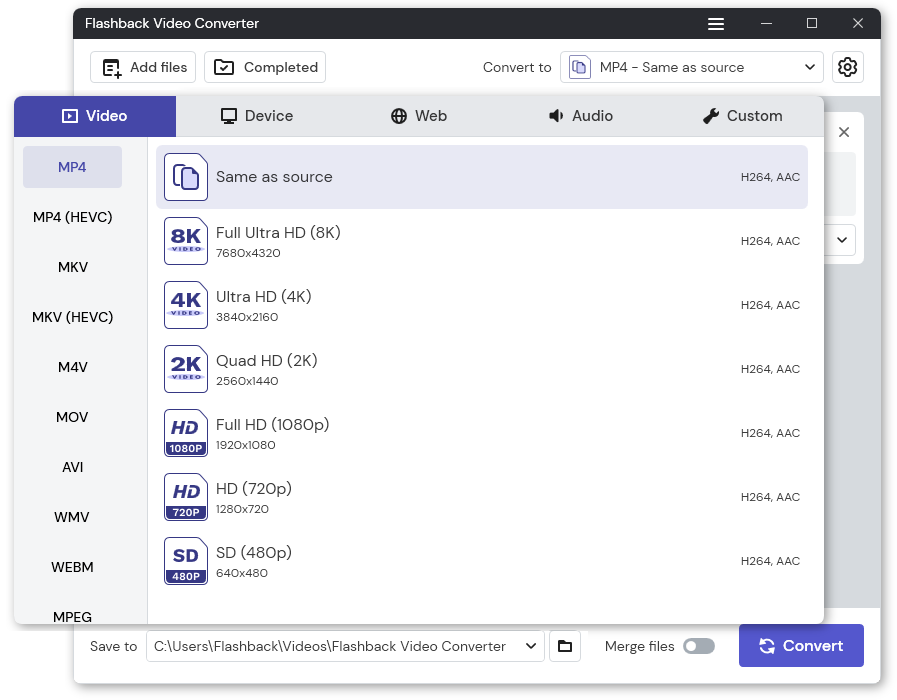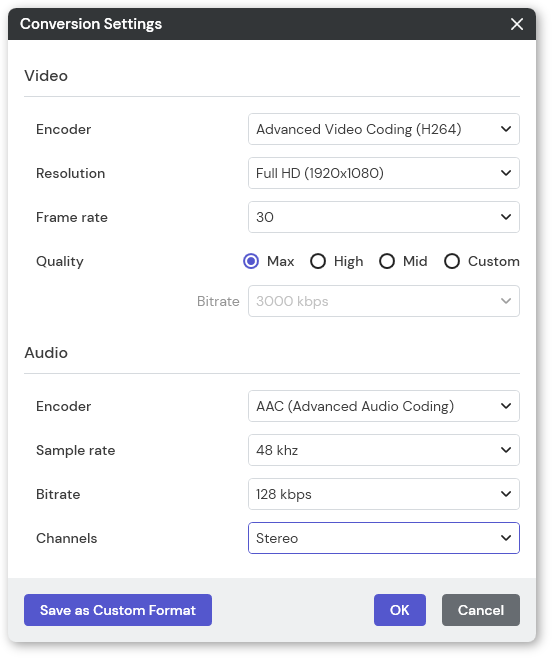Flashback Express 7
User Manual
Downloading and Installing
Recording a Video
Recorder Window
Recorder Settings
Selecting What To Record
Recording the Mouse Cursor
Starting and Stopping Recording
Recorder Control Bar
Advanced Recording Options
Annotating While Recording
Recording on a computer with dual GPUs
Previewing a Recording
Editing a Project
Editing Basics
Navigating the Project Editor
Working with Media
The Timeline
The Video Canvas
Styling Media
Editing Preferences
Exploring Media
Videos
Images
Animations
Shapes
Backgrounds
Text
Titles
Audio
Voiceovers
Subtitles
Blurs
Flashback Pro Movies
Applying Effects
Exporting
Licensing Flashback Express 7
Free vs Licensed Use
Purchasing a Flashback Express 7 License
Registering a Flashback Express 7 license
Upgrading From Pro 5 or Express 6
Managing Your Subscriptions
Feature Credits
Registering on an offline PC
Deploying a license to multiple PCs
License Troubleshooting
Misc.
How To Guides
Make a clip from a recording
Replace a voiceover
Record a facecam video
Schedule a recording session
Highlight the mouse cursor
Edit audio for an imported video
How To Move a Project to a New Computer
Record a clear voiceover
Flashback Express 7 Quick Start Guide
Flashback Express 7 FAQs
Flashback Express 6
User Manual
Downloading and Installing
Getting Setup to Record
The Recorder Window
Recording the Screen
Recording Windows and Regions
Recording Sound
Recording a Webcam
Recording the mouse cursor
Recording Settings
Recording
The Recorder Control Bar
Starting, Pausing and Stopping a Recording
Discarding or Restarting a Recording
Saving your recording
Scheduling a recording
Auto-trimming
Editing and Uploading
The Video Window
The Edit & Upload Window
Making a Clip
Uploading a Video
Exporting to other formats
Exporting Audio
Adding Subtitles
Licensing
Flashback Express Free vs Licenced
Purchasing a Flashback Express 6 license
Registering a Flashback Express 6 license
Registering Flashback Express 6 on an offline PC
Deploying a Flashback Express 6 license to multiple PCs
Flashback Express License 6 Troubleshooting
Feature Credits for Transcrptions
Misc.
How To Guides
How to record a facecam video
How to make a clip
How to schedule a recording session
How to capture the mouse cursor
Flashback Express 6 Quick Start Guide
Flashback Express 6 FAQs
Camigo
User Manual
Getting Started
Camigo System Requirements
Downloading and installing
Setting up Camigo
Checking for Updates
Camigo Settings
Using Camigo
Customizing your video
Licensing
Support
Camigo Quick Start Guide
Camigo FAQs
Video Converter
User Manual
Getting Setup
Video Converter System Requirements
Downloading and installing Video Converter
Preferences
Free Trial
Using Video Converter
Converting Format
Format settings
Turbo Conversion
Creating Clips
Cropping a video
Applying Effects
Adding Watermarks
Changing Speed
Inserting Subtitles
Licensing Video Converter
Video Converter Quick Start Guide
Video Converter FAQs
Table of Contents
- All Categories
- Video Converter
- User Manual
- Using Video Converter
- Format settings
Format settings
Updated
by Gareth Casey
Clicking the Convert to dropdown menu allows you to select the format that your added files will be converted to.
Selecting a file format
Each format has a selection of pre-defined settings suitable for playback on different devices or for uploaded to popular online platforms. The available formats are grouped into 5 categories:
- Video - A selection of popular video formats. For each format, you can choose from a selection of resolutions that are supported by that specific format or choose the Same as source option to use the same settings as original file.
- Device - A selection of popular mobile and personal devices organised by manufacturer. For each device, you can pick an MP4 output (except for DVD and Blu-Ray which use their own encoding) that is optimized for use on that specific device.
- Web - A selection of popular online platforms where you may want to upload videos. For each platform, there is a selection of pre-sets MP4 settings that meet that platforms guidelines for videos.
- Audio - A selection of popular audio formats. For each format, you can choose from a selection of different qualities or choose the Same as source option to use the same settings as original file.
- Custom - Any customized format settings that you have created and saved.

Customizing format settings
Once a format has been selected, you can customize the properties of the file that will be produced by clicking the  button to open the Conversion Settings Window.
button to open the Conversion Settings Window.
Clicking the Save as Custom Format button will save you customized settings to the Custom section of Convert to dropdown menu so that you can easily re-use those settings again in the future.

Video
Encoder - The video encoder that will be used to encode your video. Any video player that will be used to open the video must have support for the selected encoder.
For some formats, the default video encoder will be the only one available but, for other formats, you can switch to an alternative encoder. Unless you have a specific need to change, we recommend sticking with the default encoder.
Resolution - The resolution of the video image. Selecting Original will produce a video that has the same resolution as the original file. Selecting one of the resolution presets will scale the resolution of the video image up or down as necessary.
Frame rate - The number of frames per second. Selecting Original will produce a video that has the same frame rate as the original file.
Quality - How good the video image will be. Higher quality will look better but will have less compression applied to the image compared to selecting a lower quality. Select from one of the quality presets or select Custom to pick from a selection of valid bitrates. Higher bitrate means better quality but larger file size.
Audio
Encoder -The audio encoder that will be used to encode the sound in your video. Any video player that will be used to open the video must have support for the selected encoder.
For some formats, the default video encoder will be the only one available but, for other formats, you can switch to an alternative encoder. Unless you have a specific need to change, we recommend sticking with the default encoder.
Sample rate - The samplng frequency that is used for the audio. Reducing the sample rate can reduce file size but may also reduce audio quality.
Bitrate - The quality of the audio in the video. Higher bitrate will generally mean better quality but can also increase the file size.
Channels - The number of channels that audio will be sent to during playback. Select between mono, stereo or various surround sound setups.
